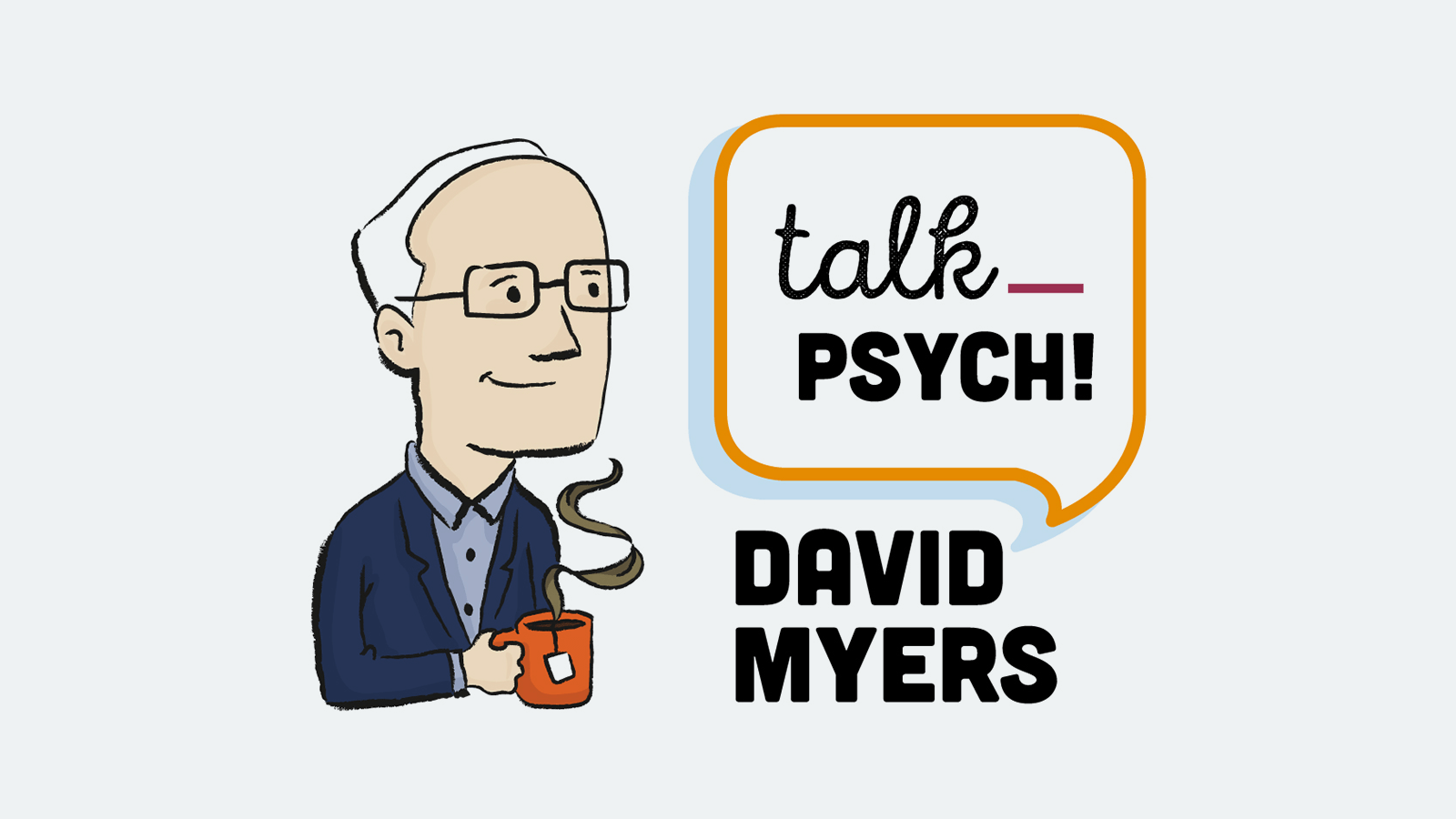-
About
Our Story
back- Our Mission
- Our Leadershio
- Accessibility
- Careers
- Diversity, Equity, Inclusion
- Learning Science
- Sustainability
Our Solutions
back
-
Community
Community
back- Newsroom
- Webinars on Demand
- Digital Community
- The Institute at Macmillan Learning
- English Community
- Psychology Community
- History Community
- Communication Community
- College Success Community
- Economics Community
- Institutional Solutions Community
- Nutrition Community
- Lab Solutions Community
- STEM Community
- Newsroom
- Macmillan Community
- :
- Psychology Community
- :
- Psychology Blog
Psychology Blog
Options
- Mark all as New
- Mark all as Read
- Float this item to the top
- Subscribe
- Bookmark
- Subscribe to RSS Feed
Psychology Blog
Showing articles with label History and System of Psychology.
Show all articles
Expert
06-20-2024
09:09 AM
“If you could introduce any two scientists, regardless of where and when they lived, whom would you choose, and how would their collaboration change the course of history?” (Bismuth et al., 2023, p. 28). The good people at the journal Science asked young scientists that question. (Access the freely available article.) Some of my favorite pairings are Leonardo da Vinci and the Richard Feynman (theoretical physicist), da Vinci and Nikola Tesla (electrical and mechanical engineer), Ada Lovelace and Alan Turing (both computer scientists), Abu Ali al Hasan ibn al-Haytham (mathematician and optician) and Isaac Newton (physicist), and Charles Darwin and Deisy das Graças de Souz (psychologist who studied behavior evolution). With each pairing, the writer briefly explains what each scientist was known for and why the pairing would have changed the course of history. I am very interested to hear how your students would answer this version of the question: If you could introduce any psychological scientist to another scientist, regardless of where and when they lived and regardless of discipline, whom would you choose, and how would their collaboration change the course of history? Posed at the end of an Intro to Psychology course, this could be a fascinating class discussion, in person or online. Give the question to students at least a week before the discussion to give students time to consider their chosen scientists. For me, I have to wonder what our kitchens would like now if Lillian Gilbreth’s engineering mind had collaborated with Leonardo da Vinci’s engineering mind. I bet they could have sorted out a better solution for our refrigerators—the one appliance that just does not quite fit seamlessly into our kitchens. Refrigerators are more of a sore thumb, actually. They are not standard size. They don’t sit flush with our counters and cabinets. Any cabinets above them are useless. For that matter, I would love to hear your answer to that question. Please post your thoughts in the comments. Reference Bismuth, K., Sharma, V., Powell, J. R., Tang, H., Cao, B., Huang, J., Patel, R. J., Bezerra, P., Zhang, X., Wen, Q., Oda, F. S., Verstiuk, O., Khan, M. S., Virgüez, E., Zhi, Y., & Dedyo, J. M. (2023). NextGen voices: Historic introductions. Science, 382(6666), 28–30. https://doi.org/10.1126/science.adk8769
... View more
Labels
-
History and System of Psychology
0
0
2,441
Expert
10-02-2023
05:00 AM
In the (freely available) editorial that opened the June 2, 2023 edition of Science, H. Holden Thorp, Editor-in-Chief of Science, reminds us that “it matters who does science” (Thorp, 2023, p. 873). His point is that scientists are human, humans make mistakes, therefore scientists make mistakes. And we should just own that. Science is riddled with mistakes. Thorp urges us to use the phrase “trust the scientific process,” because it suggests that “science is what we know now, the product of the work of many people over time, and principles that have reached consensus in the scientific community through established processes of peer review and transparent disclosure” (Thorp, 2023, p. 873). Science is the process, not just a collection of known facts—or a collection of theories that tie the known facts together into a (semi-)coherent whole. Thorp also notes that when a working group of scientists all have the same preconceived notions, their biases may affect the research questions they ask, how they try to the answer those research questions, and how they may interpret the results. However, when people with different lived experiences and cultural backgrounds are part of the research process, “scientific consensus can be reached faster and with greater reliability” (Thorp, 2023, p. 873). Yes, science is riddled with mistakes, but the greater diversity of experiences we bring to science the faster we can rid ourselves of these mistakes and reduce the number of mistakes we make going forward. I’m reminded of some of my favorite psychologists whose lived experiences led them to ask the research questions they are now famous for. Mamie and Kenneth Clark asked young Black children to choose the doll they would like to play with: a Black doll or a white doll. The children chose the white doll. That research, which was presented to the U.S. Supreme Court by Thurgood Marshall, influenced the outcome of what we now know as Brown vs. Board of Education. Anyone could have done that research, but only Black psychologists thought to ask the question. Lillian Gilbreth, the mother of industrial/organizational (I/O) psychology, became interested in efficient kitchens after 1920s sexism resulted in dropped business contracts after her husband’s death. Again, anyone could have done research into how to create an efficient kitchen, but only a female psychologist thought to ask the question. In a more recent example, researchers have been uncovering the factors that contribute to racial disparities in sleep quality, such as racial disparities in shift work, exposure to light and air pollution, and acculturation stress. Sure, we can tell people to get better sleep, they need to sleep in a quiet, dark, cool room, but what if they live in an urban environment with plenty of middle-of-the-sirens, ambient street lighting, and no air conditioning? And what if they work the night shift? What if what’s keeping them awake is worrying about whether their boss’s racism is keeping them from getting raise or promotion? Researchers who are asking these questions include Girardin Jean-Louis, Dayna Johnson, Carmela Alcántara, and Alberto Ramos (Pérez Ortega, 2021). After covering research methods in Intro Psych, ask your students to read Thorp’s editorial. Next, invite your students to consider their own lived experiences. What research questions would they ask? References Pérez Ortega, R. (2021). Divided we sleep. Science, 374(6567), 552–555. https://doi.org/10.1126/science.acx9445 Thorp, H. H. (2023). It matters who does science. Science, 380(6648), 873. https://doi.org/10.1126/science.adi9021
... View more
Labels
-
History and System of Psychology
-
Research Methods and Statistics
0
0
3,689
Expert
07-17-2023
08:23 AM
Did you know that the foot-pedal trashcan was invented by Lillian Gilbreth, who was arguably the mother of industrial/organizational psychology? Linda Woolf (Webster University) and I are starting a campaign to rename the foot-pedal trashcan. Let’s call it the “Gilbreth.” Gilbreth and her husband Frank were known for their time and motion studies. In the early 1900s, companies hired them to analyze jobs—to find ways to help their employees be more efficient in their work. When Frank died in 1924, the companies stopped hiring Lillian. Apparently, they thought, a woman could not possibly know anything about business. Long story short, Gilbreth must have thought something like this: Ok, you think women belong in the home? Fine. In her book The Home-Maker and Her Job, (freely available on Google Books), Gilbreth wrote that the “[w]aste of energy is the cause of drudgery in work of any kind. In industry the engineer and the psychologist, working together, have devised means of getting more done with less effort and fatigue and of making everything that is done more interesting” (Gilbreth, 1927, p. vii.). Gilbreth redirected her efficiency expertise into making improvements in the home with her greatest impact in the kitchen. While today the foot-pedal trashcan is sometimes marketed as good for hygiene, Gilbreth invented it in the name of efficiency. If you’re holding trash with two hands, you have to set it down to remove the trashcan lid. That takes time. Instead, why not use a foot to open the lid? That’s much faster. We can also credit the shelves in our refrigerator doors to Gilbreth. Imagine that we didn’t have those door shelves. Everything would be stacked on the main shelves. We’d be constantly taking stuff out to get to the stuff at the back. With the door shelves, we have much more of our refrigerated items at our fingertips. She also gave us the egg keeper, which readers of a certain age will remember. If you were collecting eggs from your own hens, having a dedicated refrigerator door shelf with indentations made specifically to hold eggs was handy. How about a dedication door space for butter? Yes, Gilbreth gave us the butter tray, too (Giges, 2012). Gilbreth redesigned the layout of our kitchens to be more efficient. Before Gilbreth, a kitchen was “a large room with discrete pieces of furniture around the edges. These might include a table, a freestanding cupboard or Hoosier cabinet, an icebox, a sink with a drying board and a stove. Ingredients, utensils and cookware might be across the room, or even in a separate pantry” (Lange, 2012). Your kitchen may sound very similar to what Gilbreth created. She “put stove and counter side-by-side, with food storage above, pan storage below, and the refrigerator a step away. A rolling cart provided additional surface area, and could be wheeled to the sink with a load of dirty dishes, where soap, sponge and drying rack were all within reach. The idea was to create a tight circuit for the cook, with no need to move the feet. The L-shaped arrangement she devised continues to be one of the most popular options for contemporary kitchens” (Lange, 2012). Gilbreth didn’t just think this design was more efficient. She tested it to see if it actually was. If you’d like to give your student some research design practice, invite your students to consider how such a study could be conducted. Gilbreth had a baker make a strawberry shortcake first in the traditional kitchen and again in the redesigned kitchen. The utensils and the equipment in the two kitchens were identical. The only difference was their placement. There were two dependent measures: 1) the number of operations, such as opening a drawer or closing the oven door, and 2) the number of steps—literally, the number of footfalls. The traditional kitchen required 97 operations, the Gilbreth kitchen only 64. The traditional kitchen required 281 footfalls, the Gilbreth kitchen a mere 45 (Lange, 2012). This redesign is now known as the kitchen triangle formed by the stove, sink, and refrigerator at the corners. Ideally, the perimeter of this triangle measuring no more than 26 feet. I just measured our kitchen. From center of stove to center of refrigerator is six feet, center of refrigerator to center of sink is seven feet, and center of sink to center of stove is eight feet. That’s a total of 21 feet. “Gilbreth’s final contribution to the kitchen as workspace is the Gilbreth Management Desk, exhibited by IBM at the Century of Progress Exhibition in Chicago in 1933… The desk had drawers for bills paid and unpaid, a shelf for cookbooks and a nook for a telephone”(Lange, 2012). Finally, I know who to blame for this weird, almost unusable space in our house. When bills came in the mail, when we had telephones that plugged into the wall, and before the advent of home offices and laptop computers, this space made sense. Now, not so much. These are only some of the contributions Gilbreth made to our home lives. Encourage your students to read more about her. References Giges, N. (2012). Lillian Moller Gilbreth. The American Society of Mechanical Engineers. https://www.asme.org/topics-resources/content/lillian-moller-gilbreth Gilbreth, L. M. (1927). The home-maker and her job. D. Appleton and Company. https://www.google.com/books/edition/The_Home_maker_and_Her_Job/QAQLAQAAIAAJ?hl=en&gbpv=1 Lange, A. (2012, October 25). The woman who invented the kitchen. Slate. https://slate.com/human-interest/2012/10/lillian-gilbreths-kitchen-practical-how-it-reinvented-the-modern-kitchen.html
... View more
Labels
-
History and System of Psychology
-
Industrial and Organizational Psychology
0
1
4,824
Expert
08-30-2021
08:42 AM
Interested in the history of psychology? Check out this series of 5-minute history videos! Today's video features James McConnell, who found a chemical basis for memory by studying worms.
... View more
Labels
-
History and System of Psychology
3
1
2,956
Topics
-
Abnormal Psychology
5 -
Achievement
2 -
Affiliation
1 -
Cognition
9 -
Consciousness
13 -
Current Events
6 -
Development Psychology
9 -
Developmental Psychology
12 -
Drugs
4 -
Emotion
19 -
Evolution
1 -
Gender
4 -
Gender and Sexuality
3 -
Genetics
2 -
History and System of Psychology
4 -
History and Systems of Psychology
2 -
Industrial and Organizational Psychology
15 -
Intelligence
1 -
Learning
26 -
Memory
10 -
Motivation
4 -
Motivation: Hunger
1 -
Nature-Nurture
2 -
Neuroscience
15 -
Personality
11 -
Psychological Disorders and Their Treatment
9 -
Research Methods and Statistics
41 -
Sensation and Perception
15 -
Social Psychology
45 -
Stress and Health
5 -
Teaching and Learning Best Practices
30 -
Thinking and Language
9 -
Virtual Learning
7
- « Previous
- Next »
Popular Posts








